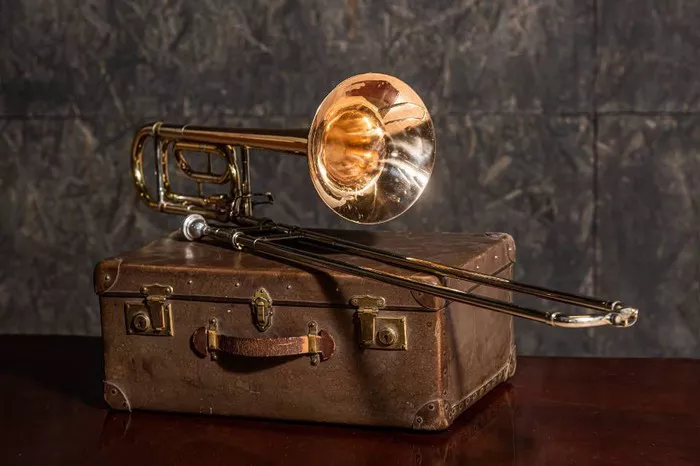The trombone, a member of the brass family, is a versatile and expressive instrument with a rich history. Its unique sliding mechanism allows for a seamless transition between notes, making it a favorite among musicians across various genres, from classical to jazz to contemporary music. The trombone’s distinct sound and wide range make it a valuable addition to any ensemble or solo performance.
Trombones come in various sizes, each offering its own distinctive characteristics and advantages. The three primary sizes of trombone are alto, tenor, and bass. While they share similar features and playing techniques, each size has its own unique tonal qualities and range, catering to different musical preferences and performance requirements.
1. Alto Trombone
The alto trombone is the smallest of the three sizes, featuring a shorter slide and a higher pitch compared to its counterparts. It is commonly used in orchestral settings, chamber music, and solo performances where a brighter, more focused sound is desired. The alto trombone’s compact size makes it ideal for intricate passages and virtuosic playing, allowing for greater agility and control over the instrument.
Advantages of the alto trombone include its ability to blend well with other instruments, particularly in higher registers, making it an essential component of brass ensembles and smaller musical groups. Its smaller size also makes it more portable and easier to handle, especially for younger or smaller-framed players. Additionally, the alto trombone offers a unique tonal color that adds depth and richness to any musical arrangement.
Advice for alto trombone players includes focusing on developing agility and precision in their playing, as well as exploring the instrument’s full dynamic range. Practicing scales, arpeggios, and technical exercises can help improve finger dexterity and overall fluency on the instrument. Additionally, studying repertoire specifically written for the alto trombone can provide valuable insights into its capabilities and musical versatility.
2. Tenor Trombone
The tenor trombone is the most commonly used size and is often referred to simply as the “trombone.” It features a medium-sized slide and a versatile range that spans from the lower register to the uppermost reaches of the instrument. The tenor trombone’s balanced tone and dynamic capabilities make it suitable for a wide range of musical styles and settings, including orchestras, concert bands, jazz ensembles, and marching bands.
Advantages of the tenor trombone include its versatility and adaptability to various musical genres and performance contexts. Its medium size strikes a balance between the agility of the alto trombone and the depth of the bass trombone, making it a popular choice among musicians of all levels and backgrounds. The tenor trombone’s expressive capabilities allow players to convey a wide range of emotions and moods, making it a highly sought-after instrument in both ensemble and solo settings.
Advice for tenor trombone players includes focusing on developing a strong, resonant sound throughout the instrument’s range. Practicing long tones, lip slurs, and articulation exercises can help improve tone quality, intonation, and overall technique. Additionally, studying various musical styles and repertoire can broaden one’s musical horizons and enhance their ability to interpret and perform different genres effectively.
3. Bass Trombone
The bass trombone is the largest of the three sizes, featuring a wider bore and a longer slide than the alto and tenor trombones. It is renowned for its rich, deep sound and commanding presence, making it an essential component of brass sections in orchestras, wind ensembles, and big bands. The bass trombone’s extended range and powerful projection make it well-suited for performing bass lines, low brass chorales, and melodic passages with gravitas and authority.
Advantages of the bass trombone include its ability to provide a solid foundation and add depth to any ensemble or musical arrangement. Its lower register complements the higher voices of other brass instruments, creating a harmonious blend and balance within the ensemble. The bass trombone’s versatility allows it to perform a wide range of musical styles, from classical repertoire to contemporary jazz and beyond, making it an indispensable asset for professional musicians and educators alike.
Advice for bass trombone players includes focusing on developing a robust embouchure and air support to produce a full, resonant sound in the instrument’s lower register. Practicing pedal tones, lip bends, and flexibility exercises can help strengthen the muscles needed to navigate the bass trombone’s extended range effectively. Additionally, studying orchestral excerpts and solo repertoire can enhance one’s musicality and phrasing, allowing for expressive and compelling performances.
Conclusion
In conclusion, the trombone is a versatile and expressive instrument with a rich tonal palette and a wide range of musical possibilities. Understanding the differences between the three primary sizes—alto, tenor, and bass—can help musicians make informed choices based on their musical preferences and performance needs. Whether performing in orchestras, concert bands, jazz ensembles, or solo settings, the trombone offers endless opportunities for artistic expression and musical exploration. By embracing the unique characteristics and advantages of each size, trombone players can unlock their full potential and make meaningful contributions to the world of music.


